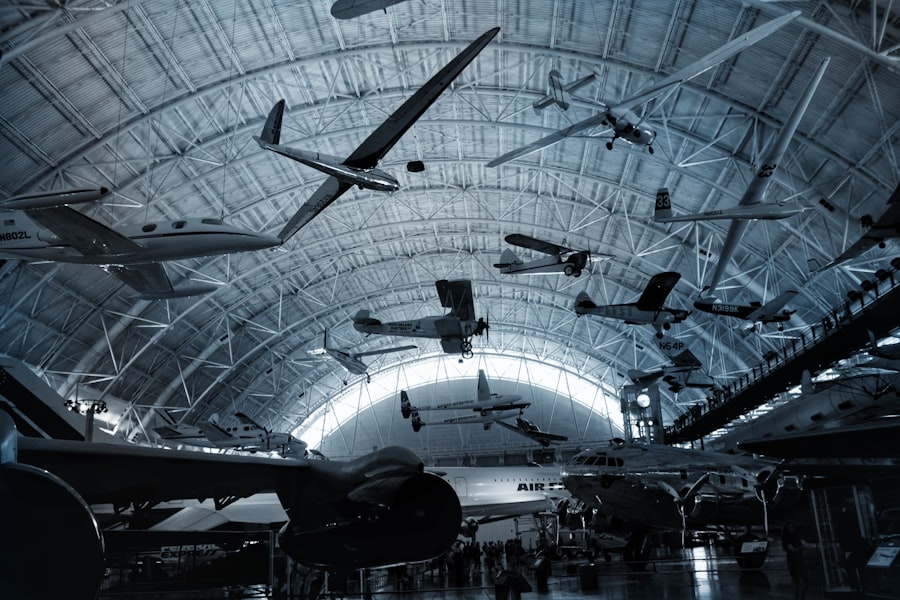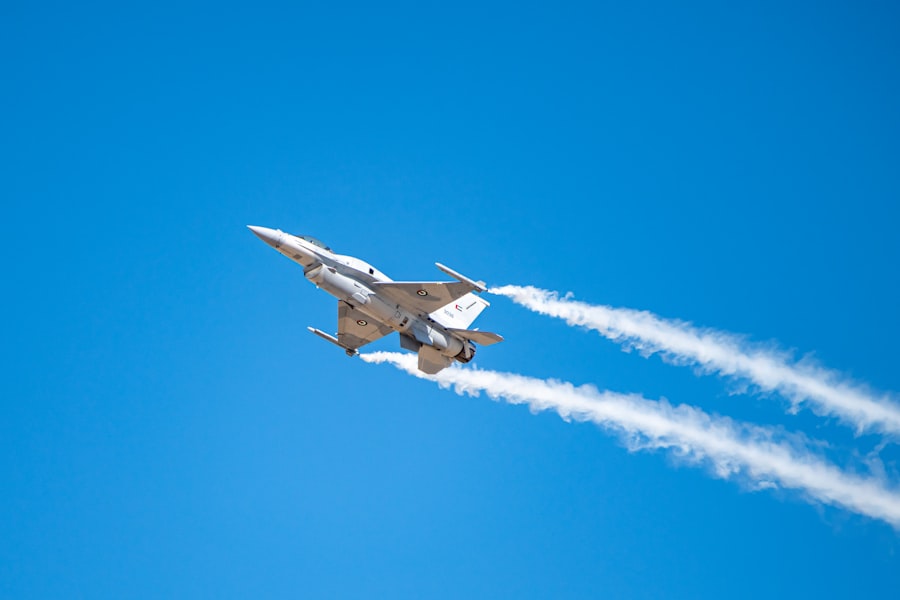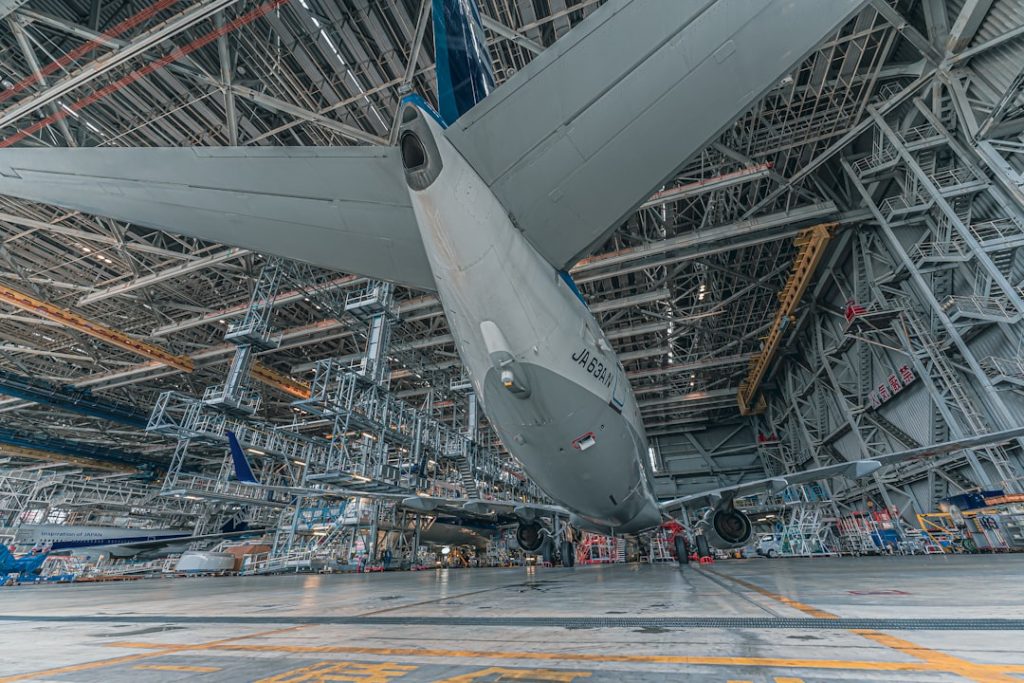The aerospace industry, a critical sector that encompasses the design, development, and production of aircraft and spacecraft, faced unprecedented challenges in 2021. This year marked a pivotal moment as the industry grappled with the lingering effects of the COVID-19 pandemic while simultaneously striving to adapt to a rapidly changing global landscape. The aerospace sector is not only vital for transportation but also plays a significant role in national security, economic development, and technological innovation.
In 2021, the industry was characterized by a complex interplay of recovery efforts, technological advancements, and a renewed focus on sustainability. As the world began to emerge from the pandemic’s grip, the aerospace industry found itself at a crossroads. Airlines and manufacturers were forced to reassess their operations, supply chains, and business models in light of shifting consumer behaviors and regulatory environments.
The demand for air travel saw fluctuations as countries implemented varying travel restrictions, leading to uncertainty in passenger numbers and cargo transport. Despite these challenges, the industry also witnessed a surge in innovation and collaboration, as companies sought to leverage new technologies and practices to enhance efficiency and resilience.
Key Takeaways
- The aerospace industry in 2021 is facing unprecedented challenges and opportunities due to the impact of the COVID-19 pandemic and technological advancements.
- The COVID-19 pandemic has significantly impacted the aerospace industry, leading to decreased demand for air travel and a shift in focus towards cargo and defense sectors.
- Aerospace companies in 2021 are presented with opportunities in the areas of urban air mobility, sustainable aviation, and digital transformation, while also facing challenges such as supply chain disruptions and financial constraints.
- Technological advancements and innovations in the aerospace industry are driving developments in electric propulsion, autonomous systems, and advanced materials, revolutionizing air travel and space exploration.
- Environmental sustainability and regulatory changes are becoming increasingly important in the aerospace industry, with a focus on reducing carbon emissions and implementing more stringent regulations to promote sustainable practices.
Impact of the COVID-19 Pandemic on the Aerospace Industry
The COVID-19 pandemic had a profound impact on the aerospace industry, leading to an unprecedented decline in air travel demand. In 2020, global passenger traffic plummeted by over 65%, resulting in significant financial losses for airlines and manufacturers alike. As 2021 unfolded, the industry continued to feel the repercussions of this downturn.
Airlines were forced to ground fleets, lay off employees, and seek government bailouts to stay afloat. The International Air Transport Association (IATA) projected that the airline industry would not return to pre-pandemic levels until at least 2024, highlighting the long road to recovery. In addition to financial strain, the pandemic also disrupted supply chains critical to aerospace manufacturing.
Lockdowns and restrictions led to factory closures and labor shortages, causing delays in production schedules and delivery timelines. Major players like Boeing and Airbus faced challenges in ramping up production rates as they navigated a complex web of suppliers and logistics. Furthermore, the pandemic accelerated trends such as remote work and digital transformation, prompting companies to rethink their operational strategies and invest in technology that could enhance efficiency and reduce costs.
Opportunities and Challenges for Aerospace Companies in 2021

Despite the myriad challenges posed by the pandemic, 2021 also presented unique opportunities for aerospace companies willing to adapt and innovate. One significant opportunity lay in the growing demand for cargo transport. With e-commerce booming during the pandemic, airlines pivoted to prioritize freight services, leading to increased investments in cargo aircraft and logistics capabilities.
Companies that could quickly adapt their fleets and operations to meet this demand found themselves well-positioned for growth. However, alongside these opportunities came formidable challenges. The aerospace industry faced heightened competition as new entrants emerged, particularly in the realm of urban air mobility and electric vertical takeoff and landing (eVTOL) aircraft.
Established companies had to contend with not only traditional rivals but also innovative startups that were redefining air transportation. Additionally, regulatory hurdles related to safety and certification processes posed significant barriers for new technologies seeking market entry. Balancing innovation with compliance became a critical focus for aerospace firms aiming to maintain their competitive edge.
Technological Advancements and Innovations in the Aerospace Industry
| Technological Advancements | Innovations | Impact |
|---|---|---|
| Advanced Materials | 3D Printing | Reduced weight and improved fuel efficiency |
| Advanced Avionics | Autonomous Systems | Enhanced safety and operational efficiency |
| Aerodynamics | Supersonic Travel | Reduced travel time and improved passenger experience |
| Propulsion Systems | Electric Aircraft | Reduced emissions and noise pollution |
Technological advancements played a crucial role in shaping the aerospace industry in 2021. The push for greater efficiency and sustainability led to significant investments in research and development across various domains. One notable area of innovation was in aircraft design, where manufacturers explored lightweight materials such as carbon fiber composites to reduce fuel consumption and emissions.
The development of more efficient engines also gained momentum, with companies like Rolls-Royce and Pratt & Whitney working on next-generation propulsion systems that promise improved performance. Moreover, digital technologies transformed operational practices within the aerospace sector. The adoption of artificial intelligence (AI) and machine learning enabled companies to optimize maintenance schedules, predict component failures, and enhance overall operational efficiency.
For instance, predictive maintenance tools allowed airlines to minimize downtime by addressing potential issues before they escalated into costly repairs. Additionally, advancements in simulation technologies facilitated more effective training for pilots and crew members, ensuring safety standards remained high even amid changing operational environments.
Environmental Sustainability and Regulatory Changes in Aerospace
As concerns about climate change intensified, environmental sustainability emerged as a central theme for the aerospace industry in 2021. Regulatory bodies worldwide began implementing stricter emissions standards, compelling manufacturers to prioritize eco-friendly practices. The European Union’s Green Deal aimed to make Europe climate-neutral by 2050, which included ambitious targets for reducing aviation emissions.
In response, aerospace companies ramped up efforts to develop sustainable aviation fuels (SAFs) derived from renewable sources, which could significantly lower carbon footprints. The push for sustainability also extended to aircraft design and operations. Many manufacturers began exploring hybrid-electric propulsion systems as a means of reducing reliance on traditional fossil fuels.
Companies like Airbus announced plans for hydrogen-powered aircraft by 2035, signaling a commitment to revolutionizing air travel with zero-emission technologies. Furthermore, airlines increasingly adopted carbon offset programs and sustainability initiatives aimed at reducing their environmental impact while appealing to eco-conscious consumers.
Global Market Trends and Forecast for the Aerospace Industry

The global aerospace market exhibited signs of recovery in 2021 as vaccination campaigns rolled out across various regions. Analysts projected a gradual rebound in air travel demand, particularly in domestic markets where restrictions were less stringent. According to forecasts from industry experts, passenger traffic was expected to increase steadily over the next few years, driven by pent-up demand for travel and leisure activities.
However, international travel remained uncertain due to varying vaccination rates and differing government policies. In terms of market segments, commercial aviation was anticipated to recover more slowly than cargo transport. The e-commerce boom had solidified cargo’s position as a vital component of the aerospace industry, prompting airlines to invest heavily in freighter aircraft and logistics infrastructure.
Additionally, defense spending remained robust as governments prioritized national security amid geopolitical tensions. This dual focus on commercial recovery and defense spending created a dynamic landscape for aerospace companies navigating market trends.
Strategies for Navigating Uncertain Skies in the Aerospace Industry
To successfully navigate the uncertain skies of 2021, aerospace companies adopted various strategies aimed at enhancing resilience and adaptability. Diversification emerged as a key approach; firms sought to expand their portfolios beyond traditional aviation markets by exploring opportunities in space exploration, urban air mobility, and advanced air mobility solutions. By investing in emerging technologies such as drones and electric aircraft, companies positioned themselves at the forefront of innovation while mitigating risks associated with reliance on a single market segment.
Collaboration also became increasingly important as companies recognized the value of partnerships in driving innovation and addressing common challenges. Joint ventures between established aerospace firms and startups facilitated knowledge sharing and resource pooling, enabling faster development cycles for new technologies. Additionally, engaging with regulatory bodies early in the innovation process helped streamline certification pathways for novel aircraft designs and propulsion systems.
The Future of the Aerospace Industry in 2021 and Beyond
As 2021 progressed, the aerospace industry stood at a critical juncture marked by both challenges and opportunities. The lessons learned during the pandemic underscored the importance of agility and innovation in an ever-evolving landscape. Companies that embraced technological advancements while prioritizing sustainability were better positioned to thrive in this new era of aviation.
Looking ahead, the future of the aerospace industry will likely be shaped by continued investment in research and development aimed at achieving greater efficiency and environmental responsibility. As global demand for air travel rebounds alongside advancements in technology, the industry will need to remain vigilant in addressing emerging challenges while seizing opportunities for growth. The path forward may be fraught with uncertainty; however, it is also ripe with potential for those willing to adapt and innovate in pursuit of a more sustainable future for aviation.


